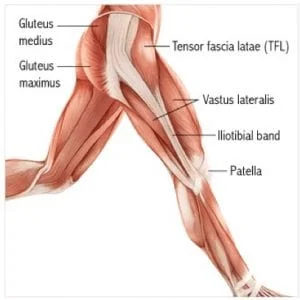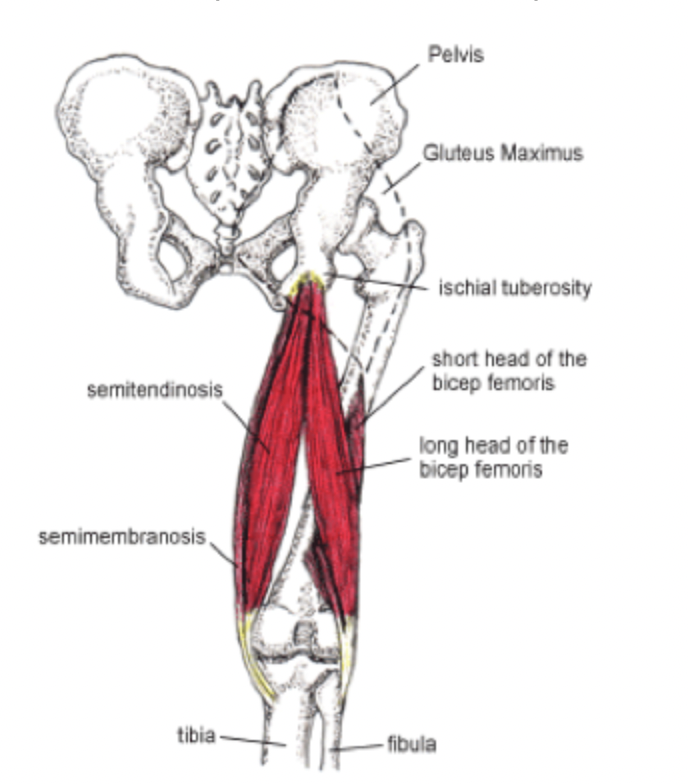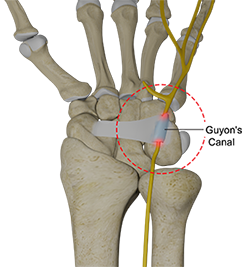IT Band Syndrome: The Overlooked Strip That Stops Athletes in Their Tracks
- golabiromtin
- Jun 14
- 3 min read
Updated: Jun 23
By Romtin G.
Introduction
Imagine you’re halfway through a run, cruising downhill, when BAM!!! A sharp pain stabs the outside of your knee, not at all like regular soreness. It’s more like something’s rubbing, catching, and refusing to glide smoothly. Welcome to Iliotibial Band (IT Band) Syndrome, one of the most common overuse injuries in runners and cyclists, but still one of the most misunderstood.
What is the IT Band, and Why Does it Matter?
The IT Band is a thick strip of connective tissue composed mostly of tendons that stretches from your hip bone (the iliac crest) down to the outside of your shin (the tibia). Think of it like a stability cable: it helps control side-to-side leg movement and stabilizes the knee when you’re walking, running, or cycling. But the catch (pun intended) is that the IT Band isn’t built to stretch much. Instead, it works with nearby muscles, like the tensor fasciae latae (TFL) and gluteus maximus, to stay taut and guide your leg through motion. And when it’s overworked, tight, or your mechanics are off, that’s when you’re in trouble!

What Causes IT Band Syndrome? What are Some Symptoms
Contrary to popular belief, IT Band Syndrome isn’t caused by the band being “too tight” on its own. It’s caused entirely by friction, as the band gets repeatedly rubbed against the outer part of your thigh bone (the lateral femoral epicondyle of your femur) as your knee flexes and extends. Over time, this friction irritates surrounding tissues and causes pain and inflammation. There are many reasons why your IT Band could even begin to experience this frictional force: weak hip and glute muscles, poor running or cycling form, sudden increase in exercise intensity, running on sloped surfaces or only in one direction on a track, or overpronation (feet roll too far inward and bring the IT Band closer to bone). Biomechanically, it’s not a “knee” issue—it’s a hip control issue that just presents itself at your knee.
Most athletes describe ITBS as feeling like a sharp/burning pain on the outer knee, pain that worsens when running downhill or after prolonged use, a snapping/catching sensation at the knee, and little to no swelling. Unlike many injuries, ITBS often doesn’t hurt during complete rest, which can make it hard to notice until it gets worse.

Diagnosis, Treatment, and Recovery
Doctors and physical therapists typically diagnose ITBS based on pain location and movement history, functional tests, and training patterns. Ober’s Test involves having the patient lie down while the examiner lifts and then lowers the top leg. If the leg stays elevated instead of dropping down, it suggests IT Band or TFL tightness. During another test, Noble’s Test, the patient lies on their back and the examiner applies pressure to the outside of the knee while straightening the leg. Pain around 30 degrees of knee flexion indicates possible IT Band syndrome. Imaging like MRIs are rarely necessary unless another injury is suspected, like a meniscus tear or patellofemoral pain syndrome (runner’s knee), both of which involve soft tissue injuries.
The good news about ITBS is that it’s very treatable, and surgery is rarely required! Recovery usually begins with rest and ice to decrease inflammation, and then moves on to exercises that strengthen the core, the glutes, and the TFL to stabilize the pelvis and reduce strain. Once pain-free, you can follow a gradual return to activity with shorter, flatter routes and cross-training. Recovery time can range from a few weeks to a few months, depending on how early you catch it and how committed you are to rehab (listen to your physical therapist)!
Prevention
Fortunately, prevention is very simple! Be sure to warm up and cool down properly, strength train your hips and glutes regularly, and don’t ramp up mileage or intensity too quickly. You can also mix up your terrain (don’t always run on the same side of the road or track), and ALWAYS listen to pain early. If the outside of your knee starts twinging, don’t push through it and take a break as soon as you can.
Conclusion
IT Band syndrome may not be dramatic like a torn ligament, but it can be just as frustrating, especially because it limits some of the most basic, joyful forms of movement: walking, running, and biking. Thank you for reading this article, and I hope you learned something new and interesting!


